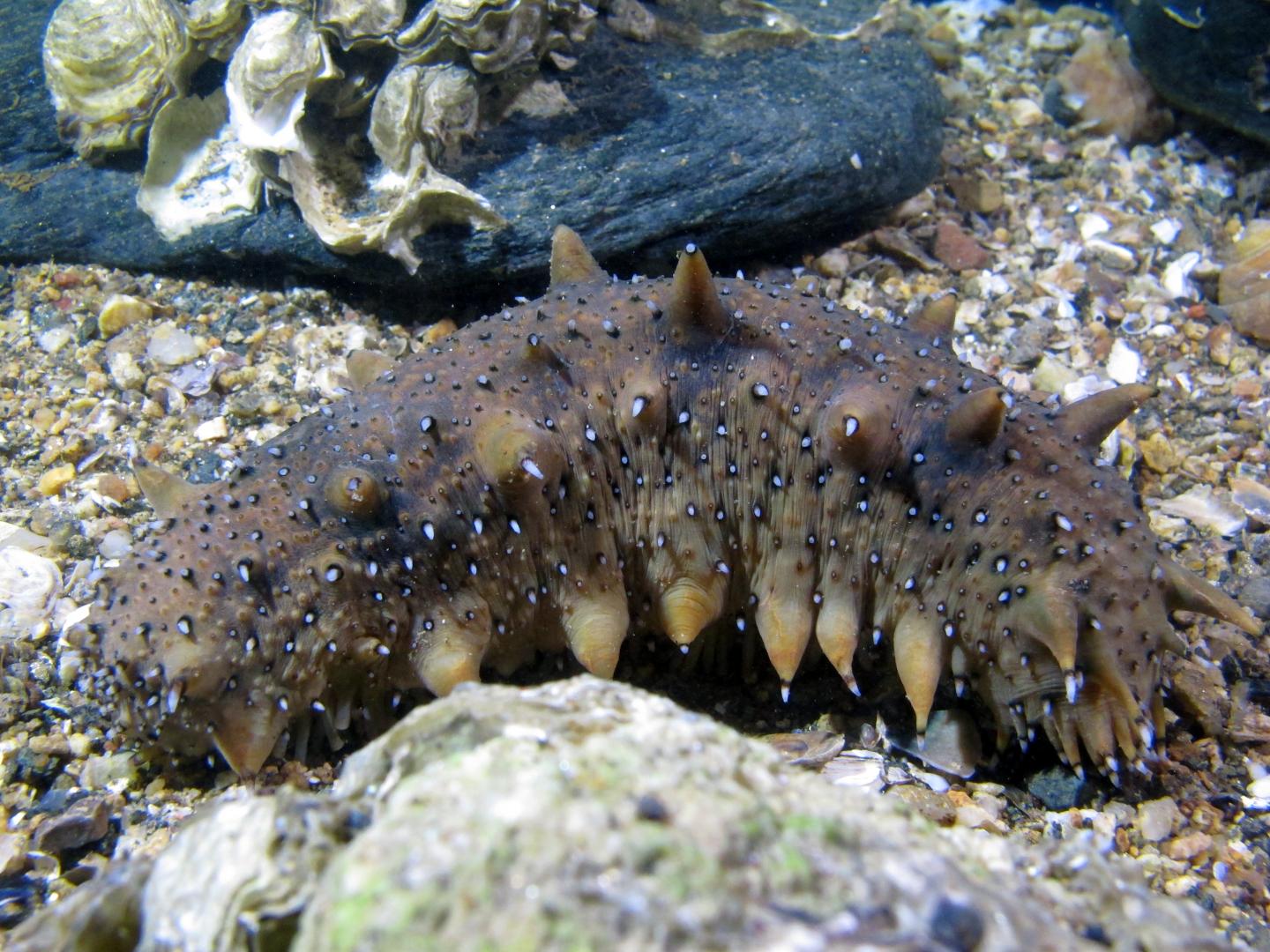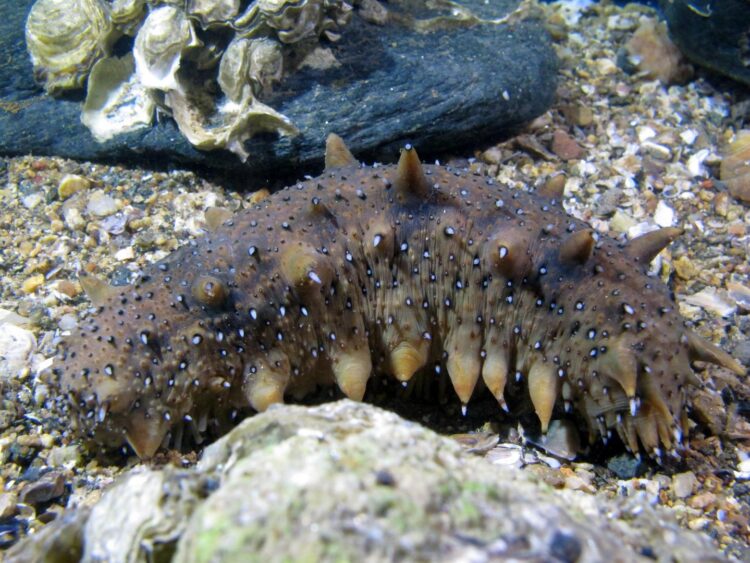Proteins essential for reproduction, metabolism and immune function trace their evolutionary history all the way back to sea cucumbers

Credit: Tianming Wang (CC BY 4.0)
A key set of proteins that help regulate hormones necessary for many essential functions in humans and other vertebrates have ancient origins in much simpler creatures such as sea cucumbers, says a new study published today in eLife.
The kisspeptin system consists of a group of proteins that help control hormones released by trio of organs: the hypothalamus, the pituitary gland and the testicles in men or the ovaries in women. This trio regulates reproduction, metabolism, the immune system and other important body functions. Tracing the evolutionary origins of the kisspeptin proteins may help scientists learn more about why they developed and how they work.
“The origins of these proteins have previously been traced to very simple creatures with spinal cords, but it hadn’t been traced back any further,” says lead author Tianming Wang, Professor at the Marine Science and Technology College, Zhejiang Ocean University, China. “This raises an important question: does the kisspeptin system have an ancient evolutionary origin, or did it first emerge in animals with spinal cords?”
To answer this question, Wang and his colleagues searched for kisspeptin system genes in the sea cucumber, a very simple sea creature with no spinal cord. They identified equivalents of the kisspeptin genes in the sea cucumber.
Next, they found that administering kisspeptin-like cucumber proteins to mammal cells causes them to release calcium, similar to how human versions of the protein would behave. The sea cucumber proteins were also able to interact with receptors in the human cells, suggesting that little has changed in these proteins over the course of evolution.
Finally, the team carried out a series of experiments where they activated or blocked this signalling system in sea cucumbers. This showed that these proteins are crucial for reproduction and metabolism in the creatures.
These experiments suggest that the kisspeptin system predates the evolution of the spinal cord in animals and that it will also be present in other creatures closely related to the sea cucumber, according to senior author Naiming Zhou, Professor at the Institute of Biochemistry, Zhejiang University, China.
“Our findings indicate the existence of a kisspeptin signaling system in a very simple organism lacking a spinal cord,” Zhou concludes. “They provide new evidence to support the ancient evolutionary origin of the physiological functions in vertebrates that are controlled by the kisspeptin system.”
###
Reference
The paper ‘Existence and functions of a kisspeptin neuropeptide signaling system in a non-chordate deuterostome species’ can be freely accessed online at https:/
Media contact
Emily Packer, Senior Press Officer
eLife
[email protected]
01223 855373
About eLife
eLife is a non-profit organisation created by funders and led by researchers. Our mission is to accelerate discovery by operating a platform for research communication that encourages and recognises the most responsible behaviours. We work across three major areas: publishing, technology and research culture. We aim to publish work of the highest standards and importance in all areas of biology and medicine, including Evolutionary Biology, while exploring creative new ways to improve how research is assessed and published. We also invest in open-source technology innovation to modernise the infrastructure for science publishing and improve online tools for sharing, using and interacting with new results. eLife receives financial support and strategic guidance from the Howard Hughes Medical Institute, the Knut and Alice Wallenberg Foundation, the Max Planck Society and Wellcome. Learn more at https:/
To read the latest Evolutionary Biology research published in eLife, visit https:/
Media Contact
Emily Packer
[email protected]
Original Source
https:/
Related Journal Article
http://dx.





